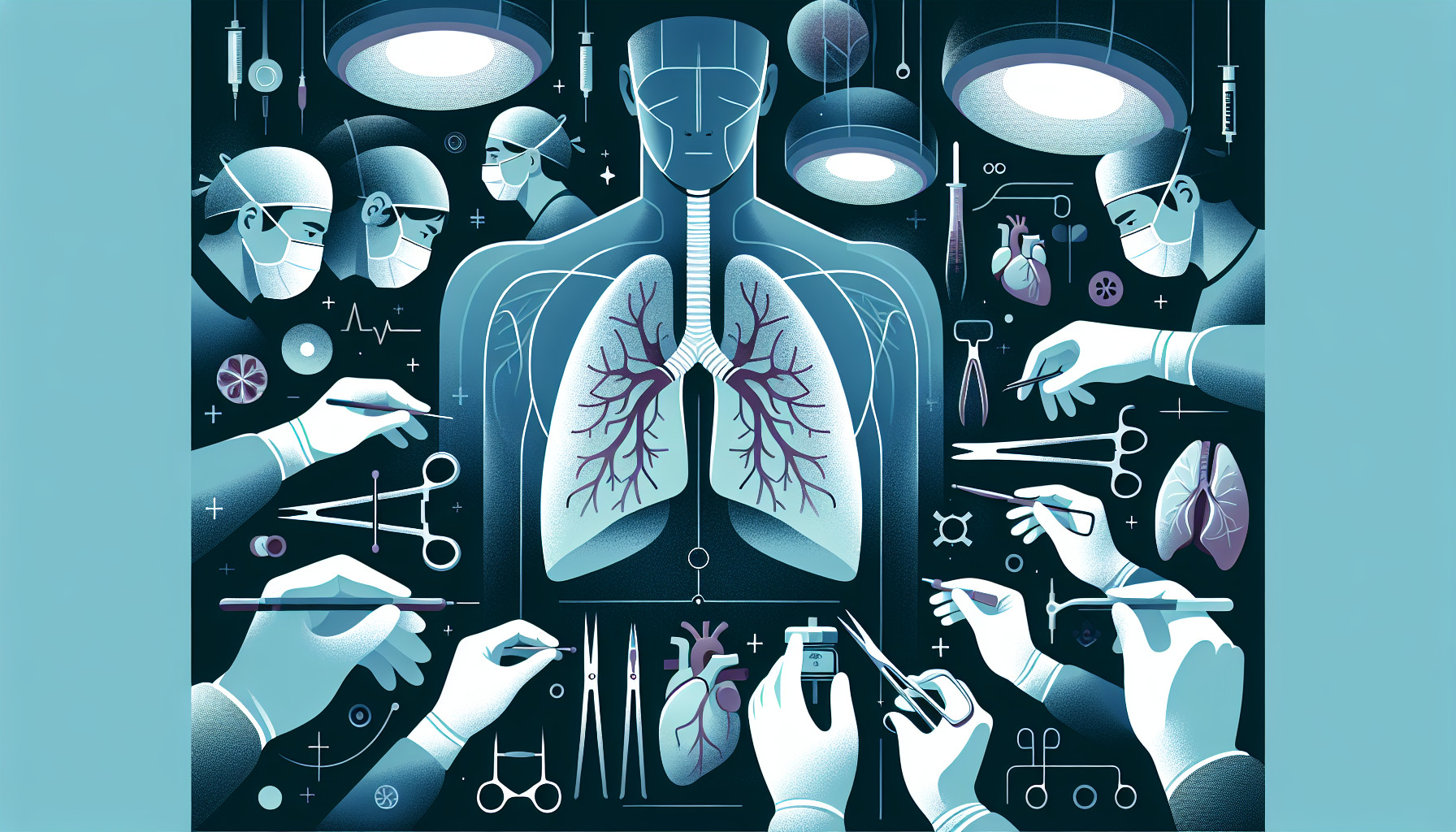Our Summary
This research paper focuses on lung transplants for patients with scleroderma, a complex disease that affects various body systems. Traditionally, people with scleroderma were often not considered good candidates for lung transplants due to the complications associated with the disease. However, recent findings suggest that scleroderma patients who undergo lung transplants have similar outcomes to those with other lung conditions not related to rheumatism. Even scleroderma patients with significant esophageal dysmotility (difficulty swallowing) have similar outcomes. The paper suggests that scleroderma should not automatically disqualify someone from a lung transplant. More research is needed to better understand how to manage the risks and complications associated with transplants in scleroderma patients, and how to best use immunosuppression before and after the transplant.
FAQs
- Why were people with scleroderma traditionally not considered good candidates for lung transplants?
- How do outcomes of lung transplants in scleroderma patients compare to those with other lung conditions?
- What further research is needed in the field of lung transplants for scleroderma patients?
Doctor’s Tip
One helpful tip a doctor might tell a patient about lung transplant is to follow a strict medication regimen post-transplant to prevent rejection of the new lung. This includes taking immunosuppressant medications as prescribed, attending all follow-up appointments, and reporting any symptoms of rejection or infection to your healthcare team promptly. It is also important to maintain a healthy lifestyle, including regular exercise and a balanced diet, to support the success of the transplant. Additionally, avoiding exposure to tobacco smoke, air pollution, and other respiratory irritants can help protect the new lung and promote long-term lung function.
Suitable For
Other types of patients who are typically recommended for lung transplants include those with end-stage lung disease such as chronic obstructive pulmonary disease (COPD), idiopathic pulmonary fibrosis, cystic fibrosis, and pulmonary hypertension. These patients often have severe symptoms such as shortness of breath, fatigue, and decreased exercise tolerance, despite optimal medical management. Lung transplantation may be considered when other treatment options have been exhausted and the patient’s quality of life is significantly impacted.
Candidates for lung transplants are evaluated based on various factors including their overall health status, severity of lung disease, ability to tolerate surgery and post-transplant medications, and psychosocial support. It is important for patients to undergo a comprehensive evaluation by a multidisciplinary team including pulmonologists, transplant surgeons, social workers, and psychologists to determine if they are suitable candidates for lung transplantation.
In general, patients who are younger, have fewer comorbidities, and are able to comply with post-transplant care are more likely to be recommended for lung transplantation. However, each case is unique and decisions regarding transplant candidacy are made on a case-by-case basis.
Overall, lung transplantation can be a life-saving treatment for patients with end-stage lung disease who meet the criteria for transplantation. It is important for patients to discuss their options with their healthcare providers and weigh the risks and benefits of transplantation in order to make an informed decision about their care.
Timeline
Before a lung transplant:
- Patient is evaluated by a transplant team to determine if they are a suitable candidate for a lung transplant
- Patient undergoes a series of tests and assessments to assess their overall health and determine the severity of their lung disease
- Patient is placed on a waiting list for a donor lung, which can vary in length depending on availability
- Patient may experience worsening symptoms and declining lung function while waiting for a transplant
After a lung transplant:
- Patient undergoes the transplant surgery, which typically involves removing the diseased lung(s) and replacing them with a healthy donor lung
- Patient is closely monitored in the hospital for complications and to ensure proper healing
- Patient may experience rejection of the donor lung, which requires close monitoring and adjustments to medication
- Patient undergoes rehabilitation and physical therapy to regain strength and improve lung function
- Patient must take immunosuppressive medication for the rest of their life to prevent rejection of the donor lung
- Patient is monitored regularly by their transplant team to ensure the long-term success of the transplant
Overall, the timeline for a patient before and after a lung transplant can be lengthy and challenging, but for many patients, a lung transplant can significantly improve their quality of life and overall prognosis.
What to Ask Your Doctor
Some questions a patient with scleroderma should ask their doctor about lung transplant include:
- Am I a candidate for a lung transplant despite having scleroderma?
- What are the potential risks and complications of a lung transplant for someone with scleroderma?
- How does scleroderma impact the success rate of a lung transplant?
- How will my scleroderma symptoms be managed before and after the transplant?
- Will my esophageal dysmotility affect my eligibility for a lung transplant?
- What is the process for evaluating my eligibility for a lung transplant?
- How will immunosuppression be managed before and after the transplant, especially given my scleroderma diagnosis?
- What is the expected recovery time and long-term prognosis following a lung transplant for someone with scleroderma?
- Are there any specific post-transplant care considerations for someone with scleroderma?
- Are there any ongoing clinical trials or research studies related to lung transplants for scleroderma patients that I should be aware of?
Reference
Authors: Shah RJ, Boin F. Journal: Curr Rheumatol Rep. 2017 May;19(5):23. doi: 10.1007/s11926-017-0650-z. PMID: 28386760
